-
Posts
1,728 -
Joined
-
Last visited
Content Type
Profiles
Forums
Store
Help Articles
Posts posted by Blether
-
-
Parsley is the lion.
-
Too late now to edit, so having realised it'd probably be online, I'm posting the link for the original recipe here.
-
 1
1
-
-
Blether, love the token "greenery"

Ach!
-
 1
1
-
-
Hey, thanks, Smithy. It's based on a Delia Smith recipe (she credits Doris Grant), and I've adjusted some as I've gone along. Further back in the Bread Topic I've posted it as I baked it in a 1lb tin (with a pound and a half of flour). This time I've used a new "2-kin" tin for the first time - a bit bigger than a 2lb tin, I think - and done as below:
1kg Tomizawa wholewheat flour2/3 hydration i.e. 667ml water3.7tsp salt1tsp sugar1tsp Saf Instant yeastMix, form into a rectangle, fold a third over past the middle, then the other third on top, and lay in the well-buttered tin, fold-up (ETA: this time I floured the tin, too - well, it being new and all). I gave it a slow-ish rise at a room temperature of15C or so - about 4 hours (one good thing with wholewheat flour is how good a flavour you get even with a quicker rise than this), with an oiled sheet of plastic (read: plastic bag) over the top of the tin. In the event, the top stayed below the plastic - I could leave out the oil if I did everything else the same again. Volume was about double-and-a-half, if that makes sense. The sugar's just for a kick-start for the yeast, it's not strictly necessary if you're not in a hurry.Until now I'd always mixed with a wooden spoon, but this time I just plunged my hands in and went at it. Very satisfying, but if you've much hair on your arms you want to wash the dough out sooner rather than later.Sprinkle with flour and bake at 190C (375F) for 40mins in the tin, then a further 10 upside-down on a rack. My last note says "Good!". I do love this bread.This particular flour is 13.5% gluten, from Canada, so thanks for that, too.-
 1
1
-
-
-
No-knead 100% wholewheat pan loaf.

-
 1
1
-
-
Salt, as mm says - up to 30 minutes, for me - is your best bet. Then cook as you like. For white fish with more flavour... where are you, for a start ?
-
I'd be wary of expecting a universal time for steaming eggs. Apart from the same variables you have for boiling them - not least age and size of the egg - unlike boiling water, steam doesn't have a set temperature. It will depend on the height of the heat and how well the lid seals, as well as ambient temperature and the size of the pan and...
-
Hi, Huiray. You're right on all points, I think, except that none of these others were in my fridge or pantry!
I think Romaine lettuce is available year-round. It's been great value over the last few months, the best out of the salad greens. If you care to spend time looking for it - not that I suppose you would - I have some history on eG with mizuna and negi, which though, I have probably called leeks. I haven't posted any this year, but a negi gratin remains a favourite winter dish ever since I ate chef Imai's at La Paletta in Roppongi seventeen or eighteen years ago. I'm afraid for my part, I don't know what Boston or Butter lettuce are; chingensai, hakusai, komatsuna, and yes, even "shantsai" make their appearances in my kitchen from time to time. Yes, we get a good supply of iceberg and leafy lettuces, not maybe a very wide range of varieties. My newly coming to caesar salads at home is a question of habit rather than circumstances.
Keep the culinary and linguistic expertise flowing!
ETA: Anna, I felt it a (minor) wrench not to have greens for the photo, mostly. I can stretch to a lettuce, I just try to shop sensibly - the seasonal stuff's typically the best as well as the best value, isn't it ? And... onions !!! I rest my case, disjointed though it may be.
-
 1
1
-
-
Thanks, Anna. You're right about the greens. I wanted to save the last of the lettuce for later
 Until this year, I'd only eaten caesar salads out. Romaine lettuces have been great value lately and since I first tried mixing a week's worth of dressing, it's been caesars all the way.
Until this year, I'd only eaten caesar salads out. Romaine lettuces have been great value lately and since I first tried mixing a week's worth of dressing, it's been caesars all the way. -
Very nice, as usual, basquecook. How did you coat the fish ?
-
And an apple pie.
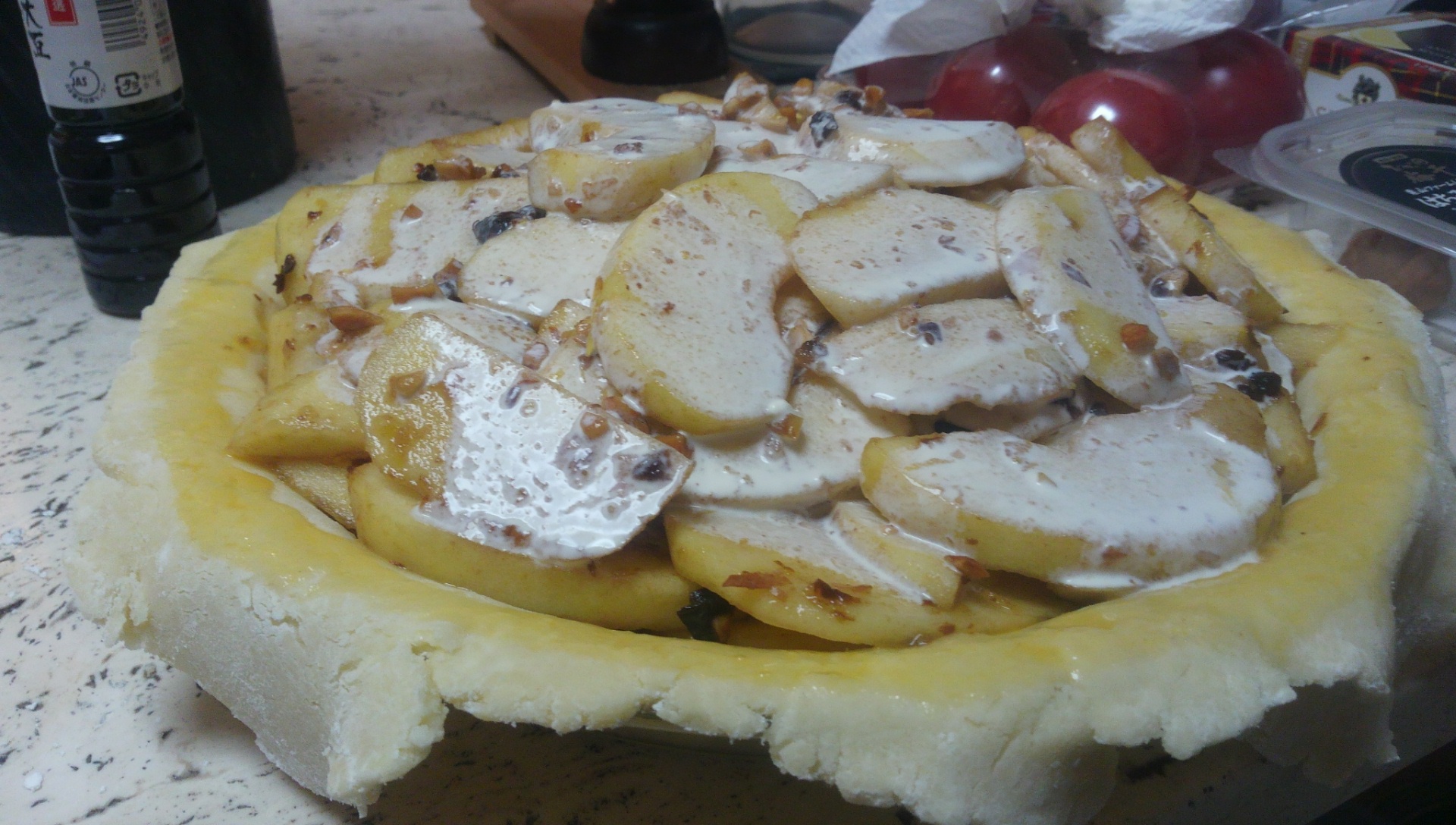
Just out the oven:
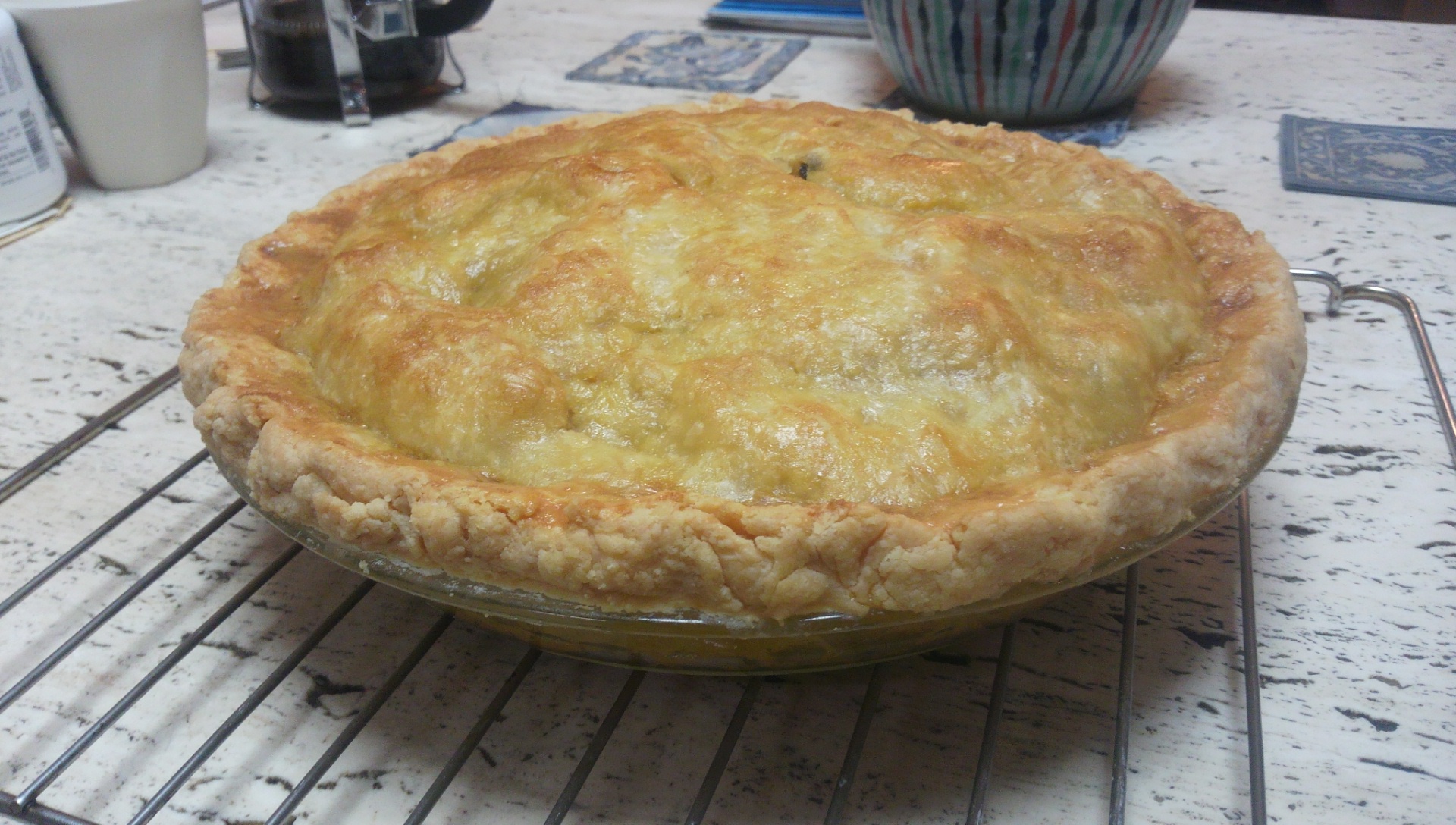
... and settling comfortably, like an old house:
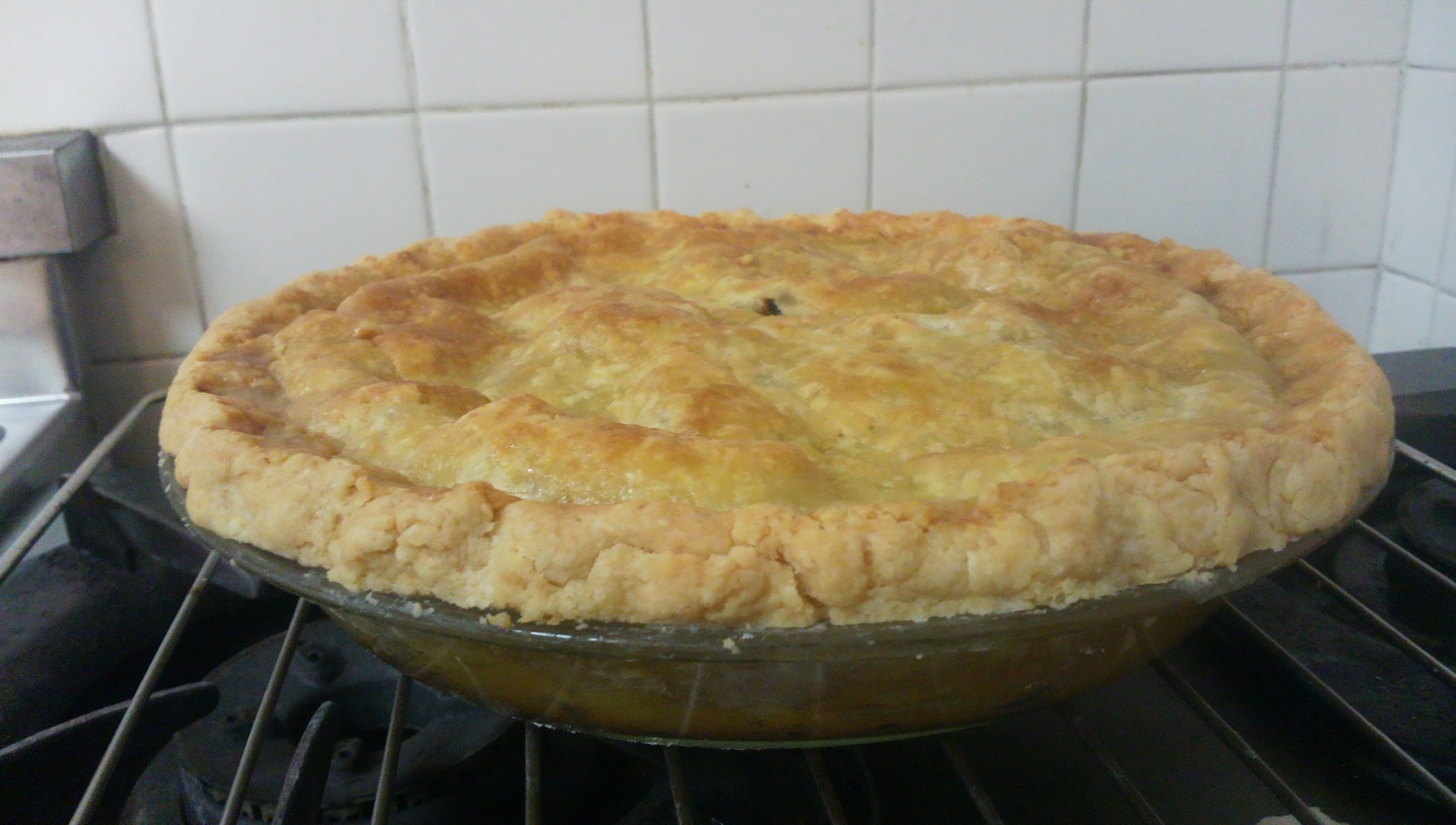
-
 12
12
-
-
Soft-focus onion tart.
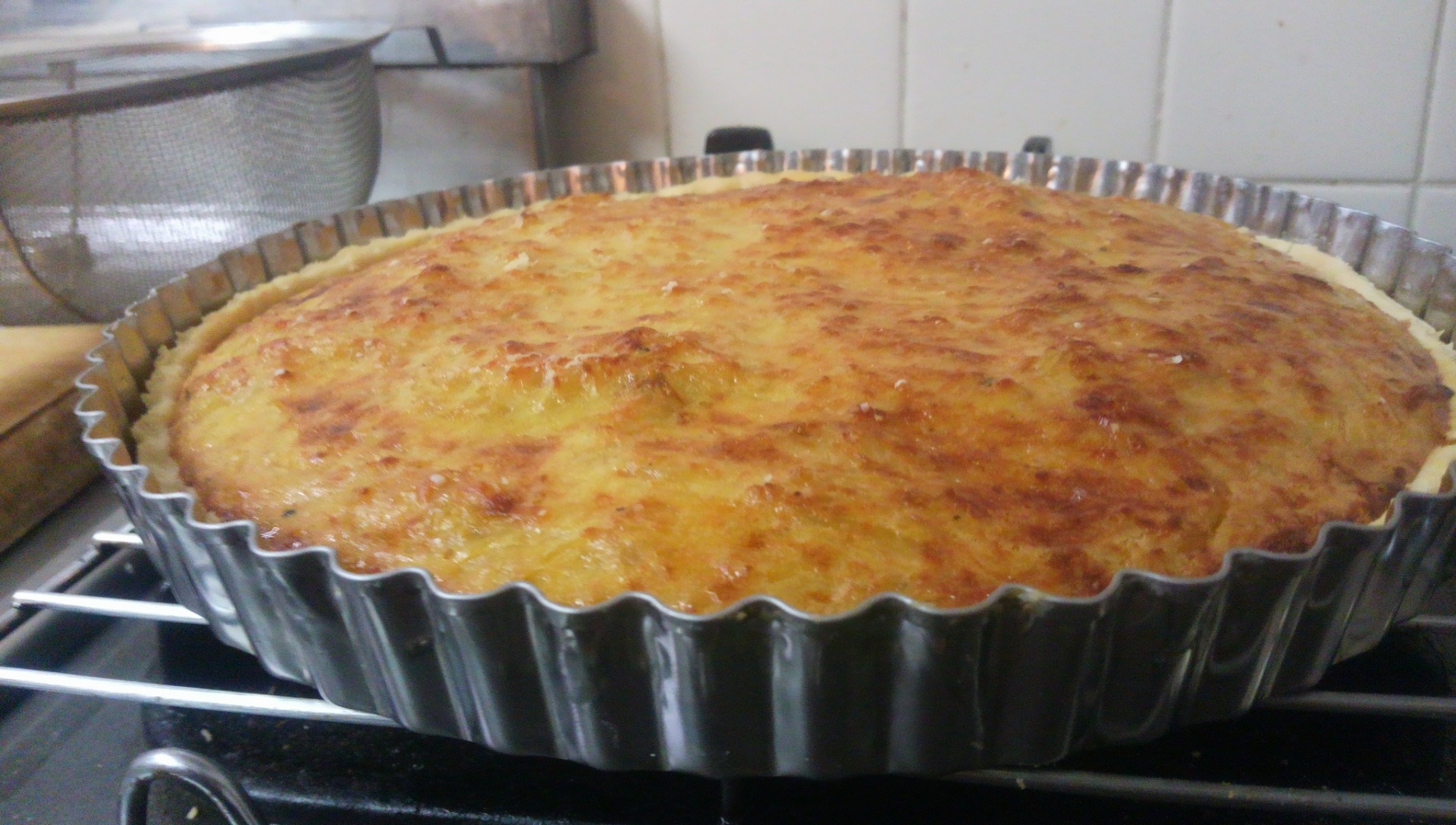
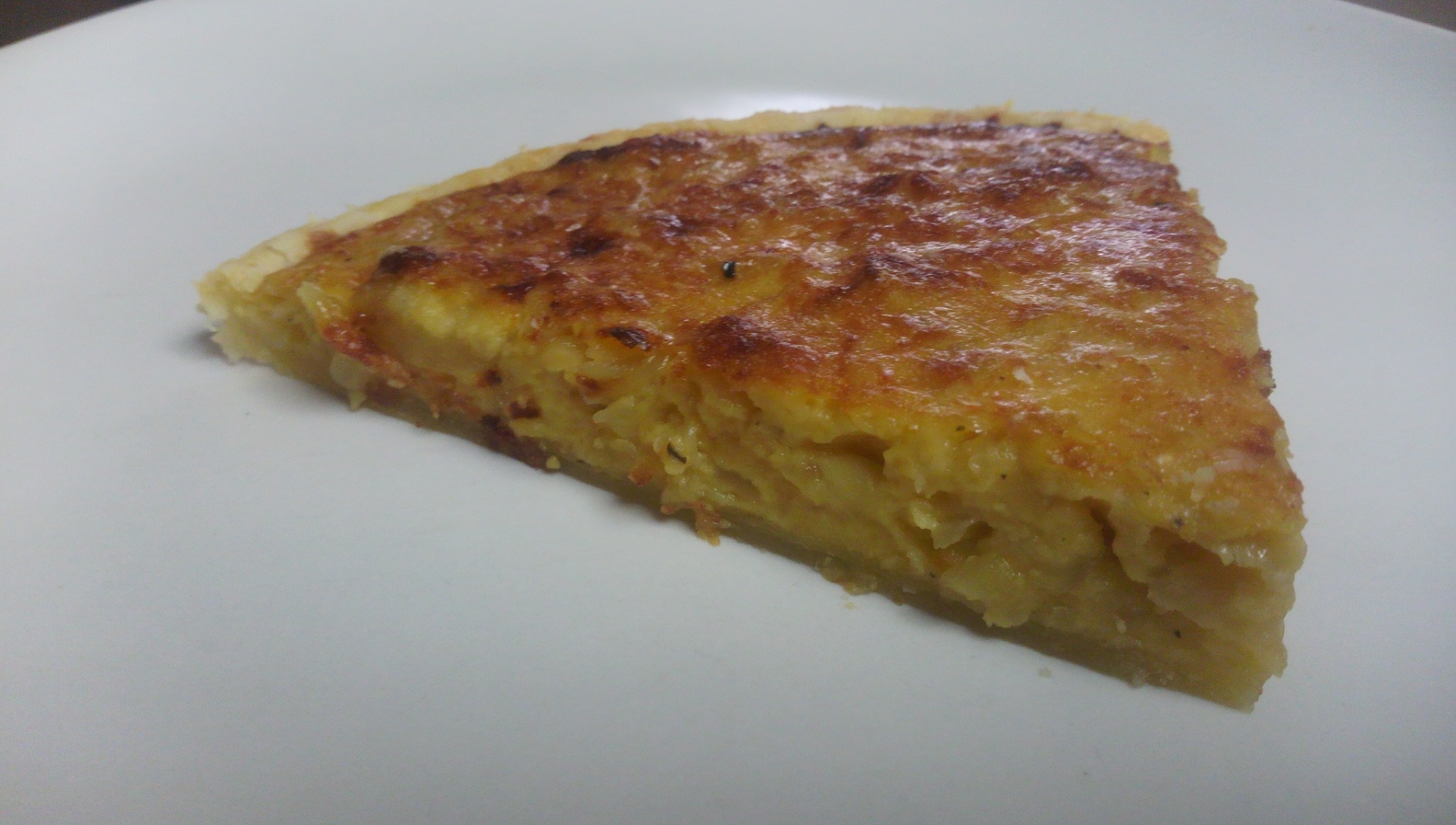
- from this recipe - scratch the thyme, bump up the pepper; just enough fresh parmesan on top to add savour without leaving you thinking "cheese".
-
 6
6
-
-
Mabuhay, Sydney.
-
Cornsilog.

-
 2
2
-
-
Yikes. When you merge threads like that, it's like ghosts from the cupboard.
The French reference I was trying to remember is this: the equal-proportions cake is known in French as "Quatre quarts" (lit. 'four quarters'). Yes, the same as a pound cake, which, I read, was originally made with a pound of each ingredient ? The Wikipedia entry on sponge cake has information on the history of it in English:
The sponge cake is thought to be one of the first of the non-yeasted cakes, and the earliest attested sponge cake recipe in English is found in the 1615 book of English poet and author Gervase Markham, The English Huswife, Containing the Inward and Outward Virtues Which Ought to Be in a Complete Woman.[1] Though it does not appear in Hannah Glasse's The Art of Cookery in the late 18th century, it is found in Lydia Maria Child's The American Frugal Housewife -
I didn't notice the SR flour - sorry. It has a raising agent in it - basically baking powder. It's very much a standard product in the UK.
Nigella.com says 2tsp baking powder per cup/150g of flour. That's kinda high - the BBC reckons 1tsp per 110g. Don't use plain flour where SR is specified - you'll end up with very solid baked goods.
Hi, Anna - I'd forgotten about Camp coffee

-
You might enjoy the classic, weight of eggs:same of flour:same of sugar:same of butter approach to a sponge cake. For example, as here: http://www.theguardian.com/lifeandstyle/2010/may/15/victoria-sandwich-recipes-fearnley-whittingstall
Hugh credits Mrs. Beeton. I'm pretty sure I remember reading that it was also a popular approach in France (and has broader roots).
-
 1
1
-
-
There's something to be said for weighing eggs for baking. There again, if your double-yolk eggs look much the same size as the rest, you'll be getting about the same overall amount of liquid: it won't likely make much difference in a recipe where you're using whole eggs.
-
You could pot-roast some pork in it (recipe a few posts further down, there).
-
Marmalade itself is a good base for future sweets, of course, and it concentrates the volume more than juicing or pulping. I don't envy you all that peel to slice !
-
Shepherd's pie, again. With shredded roast lamb, again.
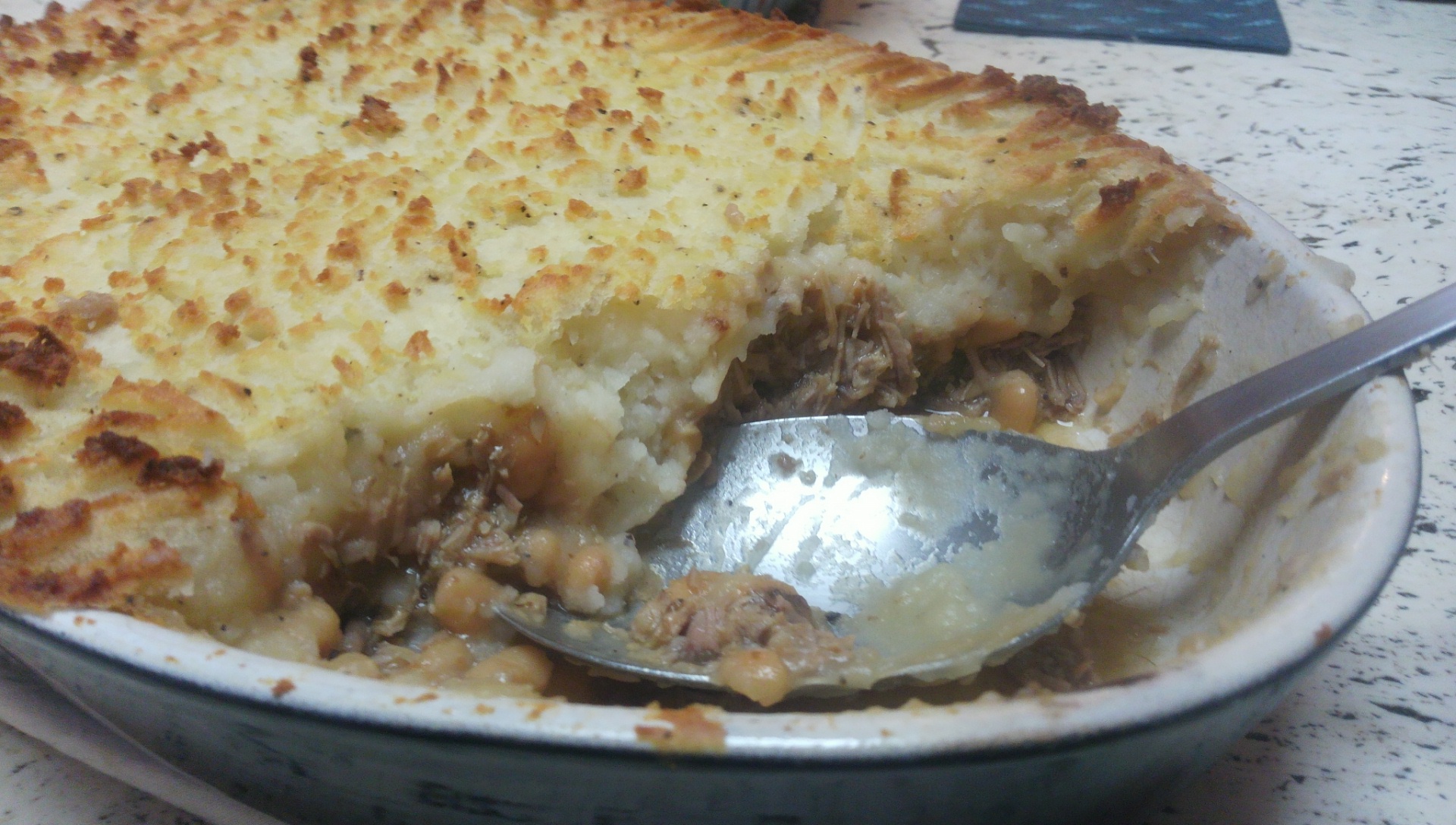
-
 4
4
-
-
-
Is it this? http://www.saveourwaterwaysnow.com.au/01_cms/details_pop.asp?ID=1445 - I'd normally think of "razor clams" as something else, myself (see Wikipedia / Razor clams).
And in Italian, http://www.naturamediterraneo.com/forum/topic.asp?TOPIC_ID=52775
Pinnidae https://en.wikipedia.org/wiki/Pinnidae
And it looks like in Japanese they're 'tairagi', which I've never heard of https://ja.wikipedia.org/wiki/%E3%82%BF%E3%82%A4%E3%83%A9%E3%82%AE - it says they're big in cantonese cooking, as well as in Chaozhou.




Your Daily Sweets: What are you making and baking? (2014)
in Pastry & Baking
Posted
I suspect too that you can make a good substitute from your fresh lemons & limes, by chopping the pith-trimmed peel and candying it over a low heat for 5 minutes, as for lemon slices under Demerara Lemon Cake here.
And, hey, then you can make lemonade too.